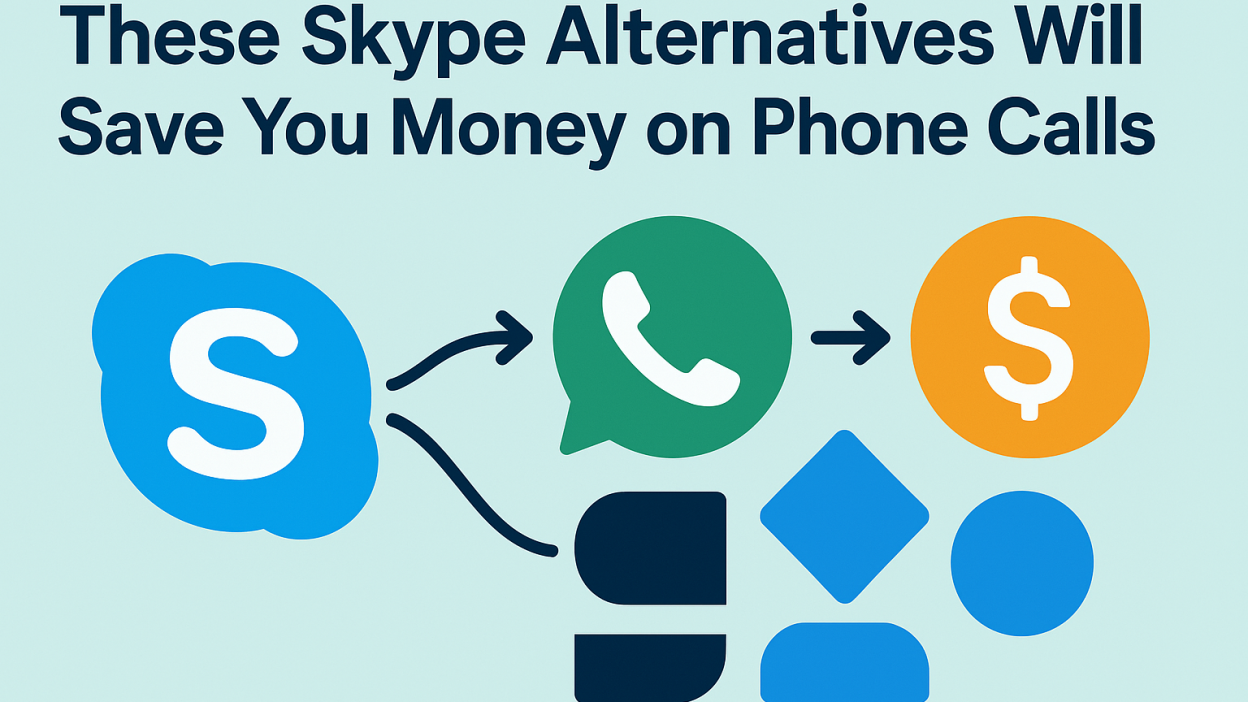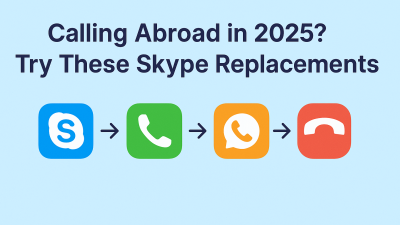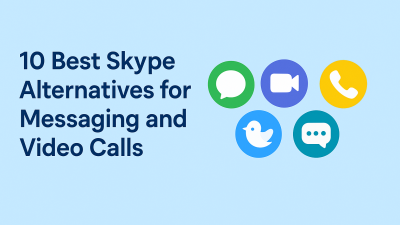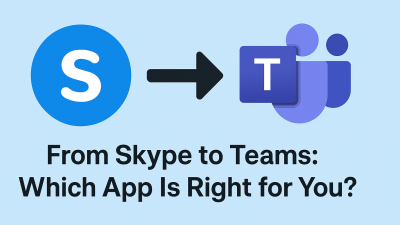Skype wasn’t perfect, but it was simple. You could call just about anyone, anywhere, without jumping through hoops or syncing contacts across apps. It didn’t care what phone your cousin used, or whether your client had installed it. It just connected you, affordably.
Now that it’s shutting down, the default advice you’ll find everywhere sounds like this: “Just use Teams, or Zoom, or WhatsApp.” But if you’ve tried those for real voice calls, especially international ones, you already know they’re not replacements. They’re workarounds. And most of them aren’t helping you save money.
What people want is a voice-first tool that’s affordable, clear, and easy to use. You don’t want another productivity suite. You just want to talk to your family, your friends, your remote team, without burning through your wallet or your time.
This post is about tools that help you spend less to talk more, not tools that hide fees behind features you’ll never use.
MyTello: If You Just Want to Call and Be Heard
When Skype worked, it worked because it didn’t get in your way. You could open the app, punch in a number, and connect, no drama, no setup, no asking the person on the other end to install something just to pick up your call. It made calling abroad feel normal.
That’s exactly the space MyTello now lives in.
MyTello doesn’t pretend to be a social network, a productivity suite, or a chat app. It’s not trying to change how people communicate. It simply gives you a clean way to call real phone numbers in other countries — mobiles, landlines, business lines, without expecting the other person to adapt to your tool.
And in a world full of apps that only work if both sides are “in the system,” that alone makes it worth using.
You can create a MyTello account in minutes. There’s no long onboarding, no package to buy before you try it. You pick the country, see the rate per minute, and call. It works just as well on a phone as it does from a laptop, and once you start using it, it becomes one of those tools you don’t have to think about; it just fits into your routine.
If you’re someone who used Skype to call parents abroad, or to stay in touch with family that isn’t particularly tech-savvy, MyTello feels like a return to that kind of simplicity. No call links, no apps on the other side, no awkward explanations. Just a ringing phone and a familiar voice.
You can even test it before committing, calls are affordable, and they’ll let you try it free, so you know what the quality sounds like for your country.
The truth is, not every call needs to happen in an app. Not every conversation needs to be scheduled. And not everyone wants to move to Teams or Zoom just to check in on someone they care about.
That’s where MyTello comes in. If you’ve been looking for a way to replace Skype without replacing the way you call, this is it.
Viber Out: Still the Underrated Champion for Global Calls
If you’re calling someone on a mobile or landline, not inside an app, Viber Out is one of the few tools that makes it affordable. This isn’t regular Viber. This is the part of Viber most people overlook: the one that connects to real phone numbers.
It’s not trying to be a workspace. It’s not asking you to schedule meetings. You just load credit and call directly to a number in a country, without needing the other person to do anything.
What makes Viber Out a serious Skype replacement is how it’s structured. You can top up with small amounts. You can see your rate per minute before dialing. And there’s a certain peace of mind in knowing the person on the other end doesn’t have to download or tap anything, they just pick up.
If you’re calling overseas regularly, to parents, to clients, to suppliers, Viber Out is one of the few apps left that keeps it straightforward and low-cost.
Google Voice: Ideal for U.S.-Based Users Who Want Function and Flexibility
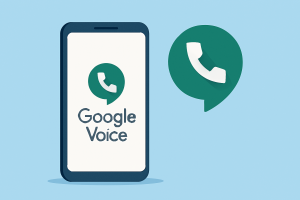
For users in the United States, Google Voice hits a sweet spot between cost and control. It gives you a phone number you can use for calls, texts, and voicemails, with no extra hardware or complex setup.
You can call anyone in the U.S. or Canada for free, and international rates are surprisingly competitive for certain countries. What makes Google Voice effective isn’t just the pricing, it’s the convenience. You can make calls from your browser. You can route them to different devices. And if you’re running a side business, it’s a clean way to separate personal and professional calls without extra phones.
Where it starts to fall short is outside North America. If you’re calling Europe, Asia, or Africa, the per-minute rates add up quickly. But if your contacts are U.S.-based, and you want reliable service with call history, transcription, and voicemail, Google Voice gives you all of that, for less than most paid apps.
Telegram Voice: When Everyone You Call Is Already in the App
Telegram isn’t a “calling app” in the traditional sense — it’s a messaging platform. But its voice calling feature is so good, it’s worth building your communication habits around if you’re already using it.
The key advantage is quality. Calls made through Telegram are crisp, even over weak connections. There’s very little lag, even in cross-country conversations. And because Telegram is lightweight, it works well on low-end devices or slower networks — something that matters more than most guides admit.
There’s no charge. No credit system. Just app-to-app calling that works. And if you’re already using Telegram for text or media, it’s a smart way to consolidate everything.
Of course, it comes with a catch: the person you’re calling has to use it too. That makes Telegram ideal for friend groups, tech-forward families, or teams who already use the platform for other communication.
It won’t replace your ability to call any number like Skype could, but it can drastically reduce how often you need to make paid calls.
OpenPhone: If You Need a Budget-Friendly Line for Business or Freelance Work
OpenPhone is designed for people who work across borders, time zones, and platforms, without needing an enterprise budget. It’s not trying to do everything. It’s trying to do voice, text, and number management really well.
If you use Skype as your business line, for client calls, remote interviews, or team check-ins, OpenPhone gives you more control at a price point that makes sense. You get a dedicated number, call routing, voicemail, and a clean app interface that works across desktop and mobile.
What sets OpenPhone apart is how much it respects your time. You don’t need to configure a PBX or navigate old-school VoIP menus. You sign up, set your preferences, and start using it.
For solo professionals, small agencies, or creators, it’s one of the few tools that gives you a second line without feeling like you’ve joined an enterprise platform. It’s not the cheapest on this list — but it saves money over time by helping you work smarter and avoid more complex setups.
Zoom Phone: Not Just for Meetings Anymore
Most people know Zoom as a video call app. But fewer know it also powers a full cloud phone system called Zoom Phone, and if you’re calling regularly or managing calls across a team, it can be surprisingly cost-effective.
Zoom Phone isn’t aimed at casual users. It’s built for businesses, remote teams, and professionals who need structure. But the real value is in the long-term cost control. You can set up call routing, get international numbers, assign extensions, and record conversations, all bundled into one platform.
If you were using Skype to manage business calls without much structure, Zoom Phone gives you that structure without requiring a telecom setup or complicated training. You pay a monthly fee, but you don’t get nickel-and-dimed for every feature.
And if you’re already paying for Zoom meetings? You’re halfway there. Bundling voice services keeps billing tight and eliminates the cost of third-party call tools.
For people scaling a remote team or juggling clients in multiple time zones, Zoom Phone cuts the hidden costs that come from switching between tools, and that’s worth a lot more than most guides admit.
RingCentral: One Subscription, Multiple Communication Channels
RingCentral isn’t new, but it’s often misunderstood. People see it as a big-business tool, and it is, but it’s also one of the most efficient ways to replace Skype if you were using it for multi-channel communication: calling, messaging, voicemail, and even fax.
What makes RingCentral a money-saver isn’t that it’s cheap per se, it’s that it eliminates the need for multiple subscriptions. Instead of paying for a calling app, a texting service, and a meeting tool, you get one system that does it all, and does it cleanly.
You get unlimited calling in many countries, custom phone numbers, call forwarding, auto-attendant menus, and deep integrations with platforms like Salesforce, Slack, and Microsoft 365.
That matters if you’re running a small business or managing global communication with clients or collaborators. It’s not designed for calling your parents abroad on a whim. It’s for users who are spending money across multiple apps and want to bring everything under one roof, while still keeping call quality high and costs predictable.
SIP-Based Calling (Linphone, Zoiper, 3CX): Lowest Cost, Maximum Control
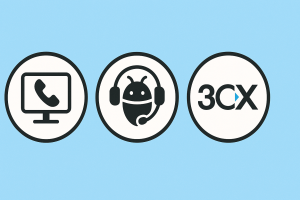
For users who are tech-comfortable or just tired of paying per-minute fees, SIP-based communication is where real savings begin. These tools require a little more setup, but the payoff is control and ultra-low rates.
What is SIP?
SIP stands for Session Initiation Protocol. It’s the technology behind most modern VoIP calls. Instead of relying on a branded app like Skype, SIP lets you connect directly to a VoIP provider and make calls through any compatible softphone (software phone).
Tools like Linphone, Zoiper, and 3CX let you:
-
Use your own SIP credentials to make calls
-
Configure custom call routing or extensions
-
Call international numbers at carrier-level rates — often a fraction of what Skype charged
For example, you could connect Linphone to a provider like Callcentric or VoIP.ms, pay a few cents per minute to anywhere in the world, and run calls through your desktop, tablet, or even browser.
There’s no app lock-in. No forced features. Just direct calling with minimal overhead.
This option isn’t for everyone. If you just want a number and a dial pad, you’re better off with something like OpenPhone or Google Voice. But if you’re serious about saving on high-volume or frequent international calls, SIP gives you the lowest rates — and the most flexibility.
The Real Difference Between “Free” and “Cost-Effective”
You’ll see a lot of blogs praising “free” apps like WhatsApp, FaceTime, or Signal. And yes, app-to-app calling is free — if both people have the same app, decent Wi-Fi, and a recent phone.
But free isn’t always reliable. And when calls don’t connect, drop halfway through, or force you to repeat yourself three times, the cost becomes your time, your clarity, or your credibility.
Cost-effective means something different. It means you:
-
Know what you’re paying
-
Know what you’re getting
-
Know it’ll work the way you expect it to
That’s why tools like Viber Out, OpenPhone, and SIP platforms make this list. They’re not the flashiest. They’re not free. But they save money by being predictable, dependable, and optimized for voice communication, not just messaging.
Choosing What Fits the Way You Call
The key to saving money isn’t finding the cheapest tool, it’s finding the one that fits how you make calls.
Here’s how to think about it:
-
If you’re calling mobile or landline numbers across countries:
Use Viber Out, Zoom Phone, or a SIP client -
If you need a business line with clean call management:
Go for OpenPhone or RingCentral -
If you’re calling mostly U.S./Canada, from the U.S.:
Google Voice gives you the most value -
If you’re calling other app users (and trust the tech):
Telegram or Signal can keep it free and high-quality -
If you’re technical and want full rate control:
SIP with Linphone or Zoiper unlocks true savings
It’s not about following trends. It’s about matching your needs to tools that don’t waste your time or money.
Final Thoughts: You Don’t Need to Spend More to Stay Connected
Skype was affordable. That’s why people stuck with it, even when newer apps popped up. But just because Skype is ending doesn’t mean your phone bill needs to go up.
If you’re willing to look past the big-name banners and try something built for simplicity and savings, you’ll find there are still plenty of tools that understand what Skype users actually need.
Whether it’s a VoIP app for business, a direct-dial solution like Viber Out, or a full SIP setup for total control, the options are out there. You just have to choose based on how you communicate, not what the app store pushes to the top.
Because in the end, saving money on calls isn’t about finding one perfect app.
It’s about finding the one that stops getting in your way, and just connects the call.

